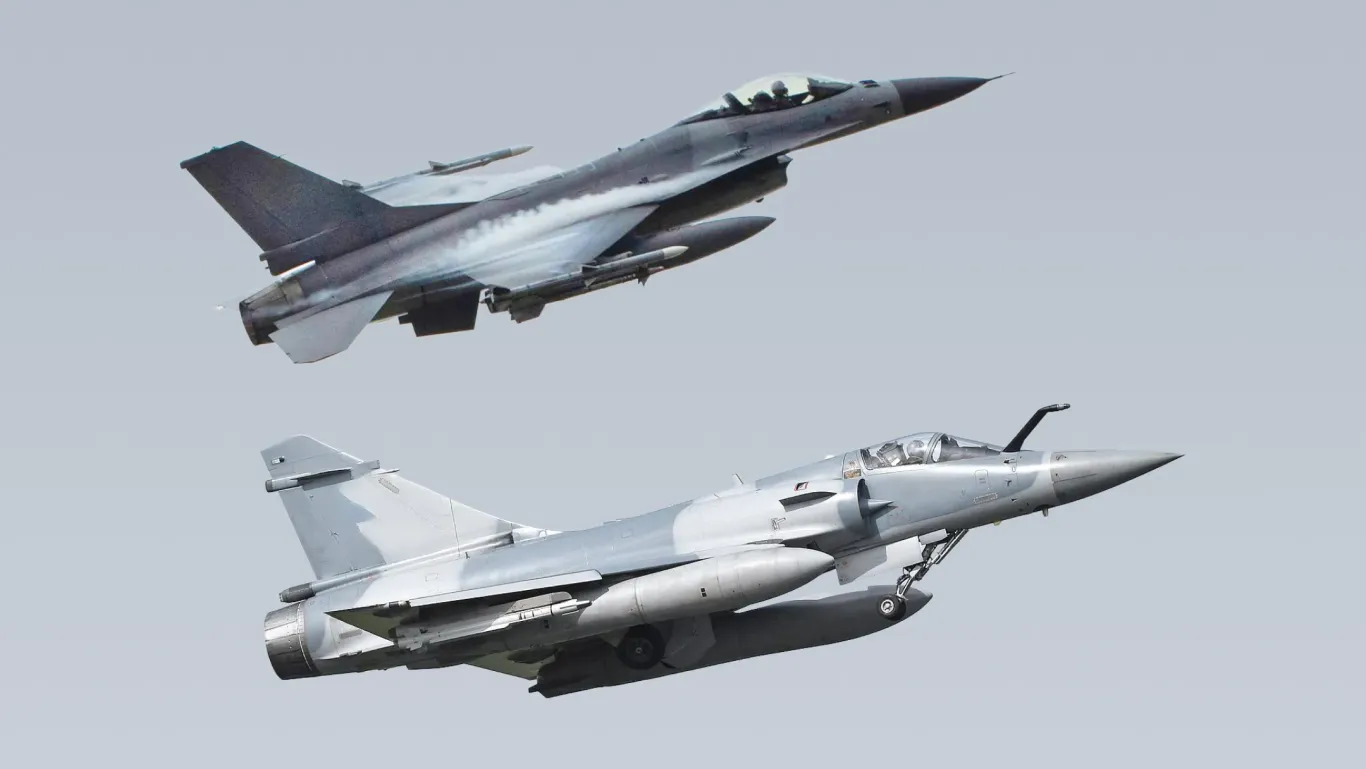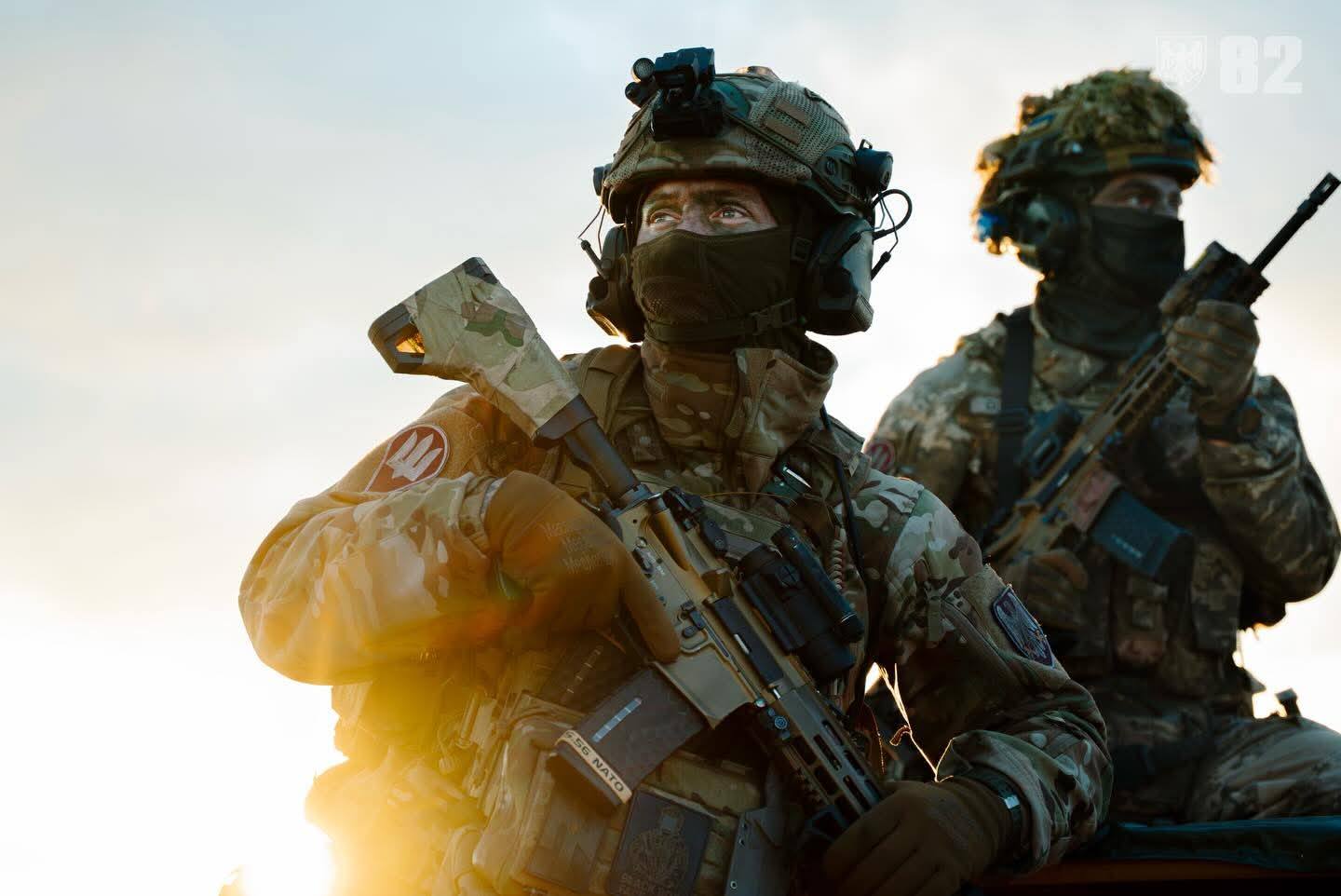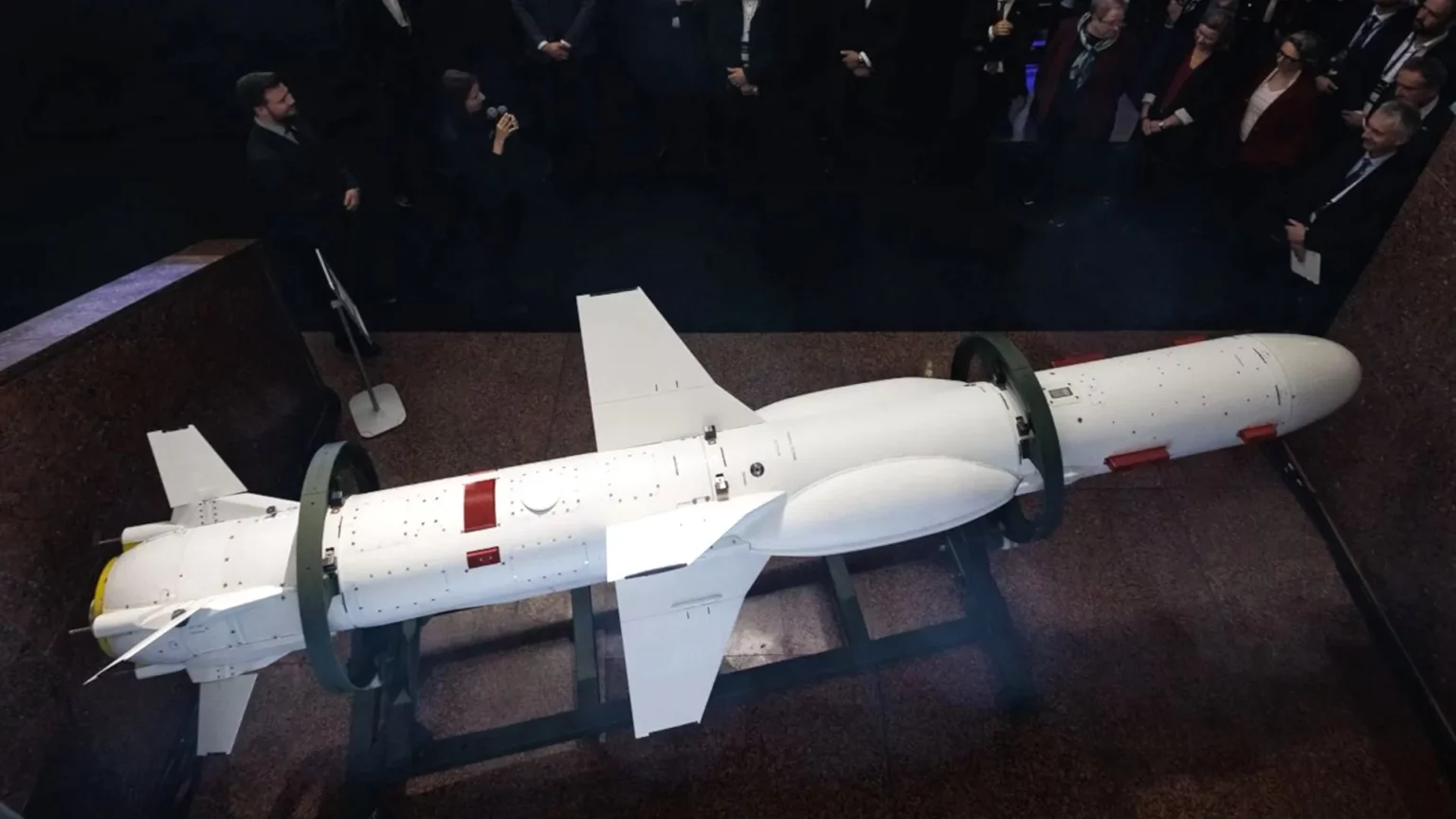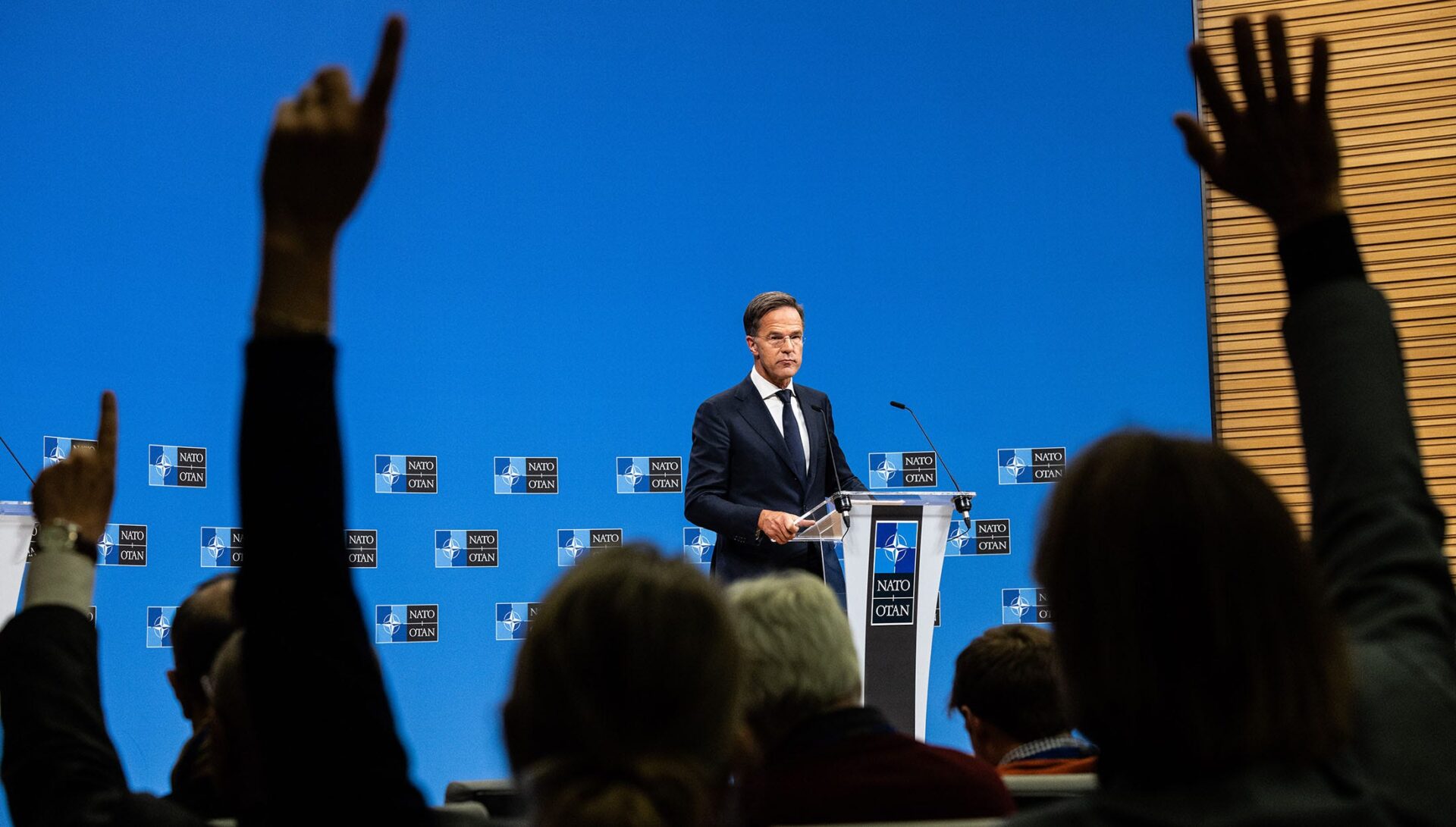
Ukraine Clears Up Airspace With Modernized Munitions
Ukraine Clears Up Airspace With Modernized Munitions
Executive Summary:
- The Ukrainian Air Force is seeing increased success in eliminating Russian aircraft and missiles, thereby opening up more opportunities for offensive air and ground operations.
- Ukrainian units are effectively using Western aircraft (e.g., F-16 and Mirage fighter jets) and various missile and bomb kits (e.g., AASM Hammer guided bombs) to take out Russian fighters and troop positions.
- Gaining air superiority is a critical condition for future operations to liberate Ukraine’s temporarily occupied territories. Doing so depends on the political will and decisiveness of Ukraine’s Western partners to continue supplying weapons.
On June 18, the Ukrainian Air Force conducted an air strike on the personnel assembly point of the Russian Armed Forces in the village of Kozynka in Belgorod oblast. A Ukrainian MiG-29 Fulcrum fighter jet launched two French-made AASM Hammer guided bombs, destroying the building where a concentration of Russian troops had taken shelter (Militarnyi, June 18). The strike was another example of Ukrainian pilots effectively obliterating targets in Russian territory as part of a concerted effort to increasingly bring the war home to Russia and put more pressure on the Kremlin (see EDM, August 13, November 13, 2024, February 24, June 9, 27).
In May, Ukrainian forces carried out another air strike in the same region, eliminating a border guard unit of the Russian Federal Security Service (FSB) (Militarnyi, May 27). A video of the operation, recorded via reconnaissance drone, was posted on the “Sunflower” Telegram channel associated with the Ukrainian Air Force (Telegram/Soniah_hub, May 26). This high-precision strike, too, was made possible by the modular AASM Hammer bomb modernization kit. Meanwhile, the Ukrainian Air Force continues to use U.S.-made GBU-62 Joint Direct Attack Munition-Extended Range (JDAM-ER) glide bombs, successfully launching the 1,000-pound variant for the first time from a Su-27 fighter jet to destroy Russian positions in February (Euromaidan Press, February 4; Telegram/noel_reports, July 7). Real-time combat experience in using these weapons against Russia’s sophisticated air defense and electronic warfare systems has been instrumental for Ukraine’s successes in the air. Such operations are also invaluable for Kyiv’s Western partners in testing and tweaking these and other munitions for future development.
Ukrainian forces have proven adept with other aerial aid as well. For example, on June 7, the Ukrainian Air Force reported that a Russian Su-35 Flanker was shot down along the Kursk salient without providing any details (Telegram/kpszsu, June 7). According to an unconfirmed story from German newspaper Bild, the Russian jet was shot down by a Ukrainian F-16 with targeting provided from a Swedish-made Saab 340 Airborne Early Warning and Control (AEW&C) aircraft (Bild, June 8; UNIAN, June 9). Once touted by Moscow as the superior fighter jet, the Su-35 “Super Flanker” has faced trouble with Ukraine’s somewhat outdated fighters (UNIAN, June 10).
The Ukrainian Air Force’s effectiveness has opened the ability to increasingly conduct combat missions in both the temporarily occupied regions and Crimea, as well as Russian border areas. This is being achieved by two primary means. First, a series of continuous strikes is being conducted on Russia’s air defense systems, including radars and missile launchers. The Defense Intelligence of Ukraine (GUR) regularly reports on the destruction of expensive and increasingly rare Russian systems. These include the so-called “pride of the Russian defense industry,” the S-400 Triumf advanced air defense system in Crimea, and a number of other air defense assets in the Zaporizhzhia oblast (see EDM, November 13, 2024; Ukrainian National News, December 13, 2024; Telegram/DIUkraine, June 14; YouTube/@DI_Ukraine, June 26). Second, the Ukrainian Air Force continues to compromise the Russian military’s production and supply lines with strikes on military and industrial facilities deep inside Russian territory. This two-pronged approach has created a serious dilemma for the Russian High Command: either keep the systems closer to the front to deter Ukrainian aviation or redeploy them to cover critical domestic facilities, but leave the front exposed (RBC-Ukraine, January 21, 2024, February 7; Business Insider, August 28, 2024).
Ukrainian units have also achieved success in taking out Russian fighter aircraft. In June, the GUR reported on a successful strike at Saky airfield in temporarily occupied Crimea, with a Su-30 fighter jet among the destroyed targets (Telegram/DIUkraine, June 1). The operation was reminiscent of one carried out in September 2023 on the same target (see EDM, September 25, 2023). Later, on the night of June 27, Ukrainian Special Operations Forces and the Security Service attacked Marinovka airfield in Russia’s Volgograd oblast, taking out at least two Su-34 aircraft and seriously damaging two others (Meduza; DW, June 27). The Ukrainian General Staff noted that these fighter-bombers are “the main tactical aviation aircraft that carry out missile and bombing strikes against Ukrainian positions and populated areas.”
The renewed supply of Western weapons has enabled Ukraine’s Air Force to operate more effectively. Previously, as deliveries slowed, Ukrainian forces had to rely on ineffective Soviet-era equipment that often failed (see EDM, March 4, 2024). The incoming aid has been much more effective and includes both precision-guided munitions (e.g., Hammer AASM and GBU-62 JDAM-ER guided bombs) and platforms for their use (e.g., F-16 and French-made Mirage fighter jets). During a meeting with French President Emmanuel Macron in June, Ukrainian President Volodymyr Zelenskyy emphasized that Mirage jets have significantly enhanced the capabilities of the Ukrainian Air Force (President of Ukraine, June 24). General Oleksandr Syrskyi, commander-in-chief of the Ukrainian Armed Forces, has also noted the impressive efficiency of the F-16 fighters taking out Russian aircraft (Ukrinform, August 4, 2024).
Unfortunately, even such highly effective equipment remains vulnerable to massive Russian air attacks. At the end of June, while repelling a combined Russian attack consisting of attack drones, cruise missiles, and ballistic missiles, Ukraine lost four F-16s, and three pilots were killed (BBC Ukraine, June 29). U.S. President Donald Trump’s promise to Zelenskyy of “ten Patriot missiles” will help, but more is needed to mitigate these threats (Euromaidan Press, July 10). While still withholding long-range Taurus missiles, Germany is financing an initiative with the Ukrainian Ministry of Defense that looks to bring “high triple digits” of systems and weapons to enhance Ukraine’s air defense and missile capabilities (Euromaidan Press, July 12).
Kyiv is also focusing on developing the country’s own capabilities. For example, on June 25, the first video displaying the use of a Ukrainian analog to Russian KAB gliding bombs was published. According to the developer, the Ukrainian bomb could prove to be more precise than the Russian one. The project is currently showing positive results in the testing phase, but additional funding is needed to ensure its successful development (Defense Express, June 25).
Gaining air dominance is a critical condition for conducting successful ground and air offensive operations. Ukraine is far from having full air dominance over the temporarily occupied territories and Crimea. The main reason for this is the numerical superiority of Russian aviation and air defense systems. Nevertheless, as the Ukrainian Air Force continues to build up its fleet of modern, Western-made aircraft, it will be able to destroy more Russian aircraft and potentially open more opportunities for offensive operations. This will be critical for future liberation operations. Resolving this issue is not merely a technical or military matter; it also requires political will and decisiveness from Ukraine’s Western partners. The keys to opening Ukraine’s skies lie in Washington and Brussels.


